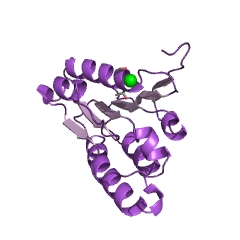| Synonyms |
ACAT, adenosyltransferase, vitamin B12s, aquacob(I)alamin adenosyltransferase, aquocob(I)alamin adenosyltransferase, ATP: cobalamin adenosyltransferase, ATP:co(I)rrinoid adenosyltransferase, ATP:cob(I)alamin adenosyltransferase, ATP:cob(I)alamin Cobeta-adenosyltransferase, ATP:cob(I)alamin transferase (ATR), ATP:cobalamin adenosyltransferase, ATP:corrinoid adenosyltransferase, ATR, cob(I)alamin adenosyltransferase, CobA, CobA-type ATP:Co(I)rrinoid adenosyltransferase, cobalamin adenosyltransferase, CobAMm, cobO mutant SVQ336, cobO mutant SVQ524, cobO mutantSVQ336, EutT, hATR, homologeous to PduO-type ATP: cob(I)alamin adenosyltransferase, human adenosyltransferase, human ATP: cob(I)alamin adenosyltransferase, human-type ACA, human-type ATP: co(I)rrinoid adenosyltransferase, human-type ATP: cob(I)alamin adenosyltransferase, LrPduO, methylmalonic aciduria type B, MMAB, MMAB protein, PduO, PduO adenosyltransferase, PduO enzyme, PduO-type ACA, PduO-type adenosine 5′-triphosphate:corrinoid adenosyltransferase, PduO-type ATP: cobalamin adenosyltransferase, PduO-type ATP:Co(I)rrinoid adenosyltransferase, PduO-type ATP:cob(I)alamin adenosyltransferase, PduO-type ATP:corrinoid adenosyltransferase, PduO-type corrinoid adenosyltransferase, ST1454, ST2180, TA1434, vitamin B12s adenosyltransferase |
| Comments |
The corrinoid adenosylation pathway comprises three steps: (i) reduction of Co(III) to Co(II) by a one-electron transfer. This can occur non-enzymically in the presence of dihydroflavin nucleotides or reduced flavoproteins [3]. (ii) Co(II) is bound by corrinoid adenosyltransferase, resulting in displacement of the lower axial ligand by an aromatic residue. The reduction potential of the 4-coordinate Co(II) intermediate is raised by ~250 mV compared with the free compound, bringing it to within physiological range. This is followed by a second single-electron transfer from either free dihydroflavins or the reduced flavin cofactor of flavoproteins, resulting in reduction to Co(I) [7]. (iii) the Co(I) conducts a nucleophilic attack on the adenosyl moiety of ATP, resulting in transfer of the deoxyadenosyl group and oxidation of the cobalt atom to Co(III) state. Three types of corrinoid adenosyltransferases, not related by sequence, have been described. In the anaerobic bacterium Salmonella enterica they are encoded by the cobA gene (a housekeeping enzyme involved in both adenosylcobalamin de novo biosynthesis and salvage), the pduO gene (involved in (S)-propane-1,2-diol utilization), and the eutT gene (involved in ethanolamine utilization). Since EutT hydrolyses triphosphate during catalysis, it is classified as a separate enzyme. The mammalian enzyme belongs to the PduO type. The enzyme can act on other corrinoids, such as cob(II)inamide. |


